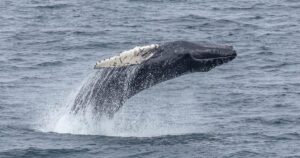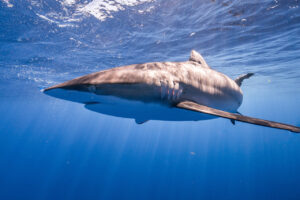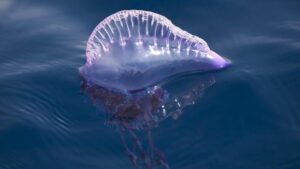The Atlantic Ocean spans over 41 million square miles and covers roughly 20% of Earth’s surface, making it home to an astounding diversity of marine life. Scientists estimate that more than 100,000 species call these waters home, from the tiniest plankton to the largest whales on our planet.
Understanding the incredible variety of sea creatures in Atlantic Ocean waters matters more than ever. These marine ecosystems serve as vital indicators of ocean health, climate patterns, and the overall well-being of our planet. As climate change continues to alter ocean temperatures and currents, studying Atlantic marine life helps scientists track environmental changes and develop conservation strategies.
The Atlantic Ocean: A Marine Biodiversity Hotspot
The Atlantic Ocean’s incredible biodiversity stems from its vast range of habitats and environmental conditions. Stretching from the Arctic to the Antarctic, this massive body of water creates numerous ecological zones that support different types of marine life.
The ocean’s depth zones play a crucial role in species distribution:
- Sunlight zone (0-200 meters): Home to most familiar marine life including dolphins, sea turtles, and colourful fish
- Twilight zone (200-1,000 meters): Where bio-luminescent creatures begin to appear
- Midnight zone (1,000-4,000 meters): Deep-sea predators and scavengers dominate
- Abyssal zone (4,000+ meters): Extreme-pressure specialists and unique ecosystems
Ocean currents like the Gulf Stream create temperature variations that support different species. Warm currents transport tropical species northward, while cold currents bring nutrient-rich waters that support massive populations of plankton and fish.
Gentle Giants of the Atlantic

The Atlantic Ocean serves as home and highway for some of the planet’s most magnificent large marine animals. These gentle giants capture our imagination while playing essential roles in ocean ecosystems.
Whales of the Atlantic represent some of nature’s most impressive creatures:
- Blue whales: The largest animals ever to exist on Earth, reaching lengths of up to 100 feet
- Humpback whales: Famous for their complex songs and acrobatic breaches, travelling up to 16,000 miles annually
- North Atlantic right whales: Critically endangered with only about 340 individuals remaining
Sea turtles have navigated Atlantic waters for over 100 million years:
- Loggerhead turtles: Use powerful jaws to crush shellfish and play vital roles in marine ecosystems
- Leather-back turtles: The largest sea turtle species, capable of diving over 4,000 feet deep
- Green turtles: Primarily herbivorous as adults, helping maintain healthy sea-grass beds
Sharks in the Atlantic Ocean: Apex Predators and Misunderstood Hunters

Despite their fearsome reputation, sharks in the Atlantic Ocean are far more complex and important than popular media suggests. These apex predators have survived for over 400 million years, making them older than trees and dinosaurs.
Major Atlantic shark species include:
- Great white sharks: Found in cooler Atlantic waters, particularly off the coasts of New England and South Africa
- Tiger sharks: Versatile hunters known for their distinctive stripes and diverse diet
- Hammerhead sharks: Their unique head shape provides enhanced sensory capabilities for hunting
Debunking shark myths reveals the truth about these misunderstood creatures:
- Sharks kill fewer than 10 people annually worldwide, while humans kill approximately 100 million sharks each year
- Most shark “attacks” are cases of mistaken identity when sharks investigate unfamiliar objects
- Sharks rarely consume humans, as we don’t match their preferred prey profiles
Sharks maintain ocean health by controlling fish populations and removing sick or weak individuals. Their decline can trigger cascade effects throughout marine ecosystems, making shark conservation crucial for ocean balance.
The actual risk of shark encounters for swimmers remains extremely low – you’re more likely to be struck by lightning than attacked by a shark.
Dangerous Sea Creatures in the Atlantic Ocean: Beauty with a Bite
While most Atlantic marine life poses no threat to humans, several dangerous sea creatures in the Atlantic Ocean demand respect and caution. These species typically use venom or other defences to protect themselves rather than hunt humans.
Venomous Atlantic species you should recognise:
- Portuguese man o’ war: Despite resembling a jellyfish, it’s actually a colonial organism with tentacles that can extend 30 feet
- Sea snakes: Found in warmer Atlantic waters, possessing venom more potent than most land snakes
- Stone-fish: Masters of camouflage with venomous spines that can cause excruciating pain
Electric and defensive species include:
- Electric rays: Can generate powerful electrical discharges up to 220 volts
- Stingrays: Generally docile but possess venomous barbs for protection
- Fire coral: Causes burning sensations and welts upon contact
First aid for marine encounters:
- Remove visible tentacles with tweezers, never bare hands
- Rinse wounds with hot water (as hot as can be tolerated)
- Seek immediate medical attention for severe reactions
- Never apply ice, alcohol, or urine to jellyfish stings
Most encounters with dangerous sea creatures result from accidental contact. Understanding their behaviour and habitats helps prevent dangerous situations.
Atlantic Ocean Jellyfish Species: Drifting Mysteries

Atlantic Ocean jellyfish species represent some of the most ancient and successful life forms on Earth. These gelatinous creatures have survived for over 500 million years, predating both dinosaurs and sharks.
Common Atlantic jellyfish include:
- Moon jellies: Translucent with four distinctive horseshoe-shaped reproductive organs
- Lion’s mane jellies: The largest known jellyfish species with tentacles extending over 100 feet
- Sea nettles: Recognisable by their bell-shaped bodies and long, trailing tentacles
Jellyfish anatomy reveals remarkable adaptations:
- Composed of 95% water with no brain, heart, or blood
- Use specialised cells called cnidocytes to capture prey and defend themselves
- Can regenerate lost body parts and some species may be biologically immortal
Ecological roles demonstrate their importance:
- Primary consumers of plankton and small fish
- Food sources for sea turtles, fish, and seabirds
- Indicators of ocean health and environmental changes
Jellyfish blooms occur when environmental conditions favour rapid reproduction. Factors include:
- Water temperature changes
- Nutrient pollution from human activities
- Over-fishing of jellyfish predators
- Ocean acidification
Beach safety tips:
- Observe posted warnings about jellyfish presence
- Wear protective clothing when swimming in known jellyfish areas
- Learn to identify local species and their sting severity
- Carry vinegar for potential Portuguese man o’ war encounters
Deep-Sea Wonders: Life in the Atlantic Abyss
The deep Atlantic Ocean harbour some of the most extraordinary and alien-like creatures on our planet. These deep-sea wonders have evolved remarkable adaptations to survive in environments of crushing pressure, perpetual darkness, and scarce food resources.
Bio-luminescent creatures create their own light through chemical reactions:
- Deep-sea angler-fish: Use glowing lures to attract prey in complete darkness
- Vampire squid: Despite their intimidating name, they feed on marine snow (organic debris)
- Hatchet-fish: Create light patterns on their undersides for camouflage
Extreme adaptations for deep-sea survival include:
- Pressure-resistant proteins that function under crushing depths
- Enlarged mouths and expandable stomachs to consume rare, large meals
- Reduced bone density and specialised gas-filled organs for buoyancy control
- Enhanced sensory systems to detect minute vibrations and chemical signals
Colourful Reef Life and Coastal Communities
The warmer waters of the Atlantic support vibrant coral reefs and diverse coastal ecosystems. These areas serve as nurseries for countless marine species and provide essential ecosystem services.
Tropical Atlantic fish species display incredible diversity:
- Parrot-fish: Use beak-like mouths to scrape algae from coral, producing sand as a byproduct
- Angelfish: Known for their vibrant colours and territorial behaviour around coral reefs
- Groupers: Important predators that help maintain reef ecosystem balance
Coral species form the foundation of reef ecosystems:
- Brain coral: Named for their resemblance to human brain tissue
- Stag-horn coral: Fast-growing branching corals crucial for reef structure
- Star coral: Hardy species that can survive temperature fluctuations
Coastal marine life thrives in shallow waters:
- Blue crabs: Important commercially and ecologically in Atlantic estuaries
- Sea stars: Keystone predators that control mollusc populations
- Sea anemones: Provide shelter for clown fish and other small species
Protecting Our Atlantic Marine Heritage
The incredible diversity of sea creatures in Atlantic Ocean waters faces unprecedented challenges from human activities and climate change. Ocean temperatures have risen significantly, affecting species distributions and breeding patterns. Plastic pollution threatens marine life at every level, from microscopic plankton to massive whales.
Conservation actions you can take:
- Reduce single-use plastics and participate in beach cleanups
- Choose sustainable seafood options using guides from organisations like Monterrey Bay Aquarium
- Support marine conservation organisations through donations or volunteering
- Practice responsible boating and diving to minimise habitat disturbance
The Atlantic Ocean’s marine life represents millions of years of evolution and adaptation. These ecosystems provide oxygen production, climate regulation, and food security for billions of people. Protecting Atlantic marine life means protecting our planet’s future.
FAQS| Sea Creatures in Atlantic Ocean
What are the most dangerous sea creatures in the Atlantic Ocean?
The most dangerous Atlantic sea creatures include the Portuguese man o’ war, various shark species (though attacks are extremely rare), sea snakes in warmer waters, and stonefish. However, most marine life poses no threat to humans when left undisturbed.
How many shark species live in the Atlantic Ocean?
The Atlantic Ocean is home to over 40 shark species, including great whites, tiger sharks, hammerheads, and various smaller species. Most are harmless to humans and play crucial roles in maintaining ocean ecosystem balance.
Which Atlantic Ocean jellyfish species are most common?
Common Atlantic jellyfish include moon jellies, sea nettles, and lion’s mane jellies. The Portuguese man o’ war, while technically not a jellyfish, is also frequently encountered in Atlantic waters.
What’s the largest sea creature found in the Atlantic Ocean?
The blue whale is the largest creature in the Atlantic Ocean and the largest animal ever known to exist on Earth, reaching lengths up to 100 feet and weighing as much as 200 tons.
Are there coral reefs in the Atlantic Ocean?
Yes, the Atlantic Ocean contains several coral reef systems, including the Mesoamerican Reef, Florida Reef Tract, and various Caribbean reefs. These support incredible biodiversity but face threats from climate change and human activities.